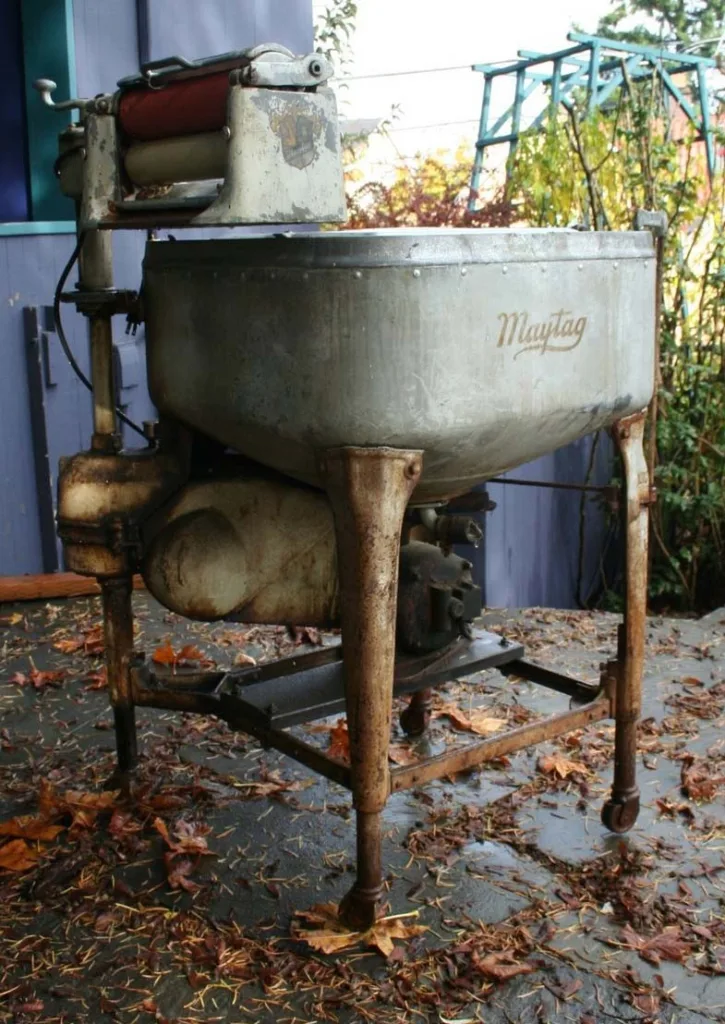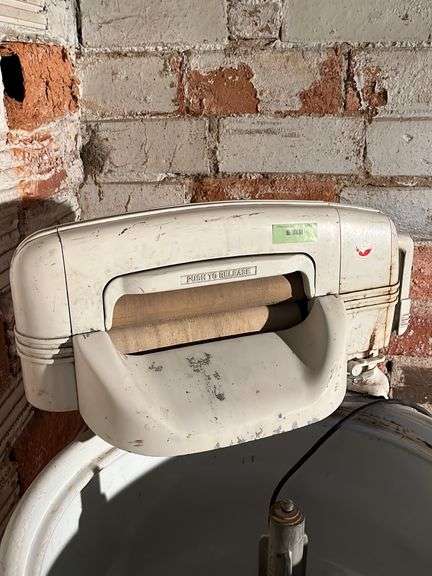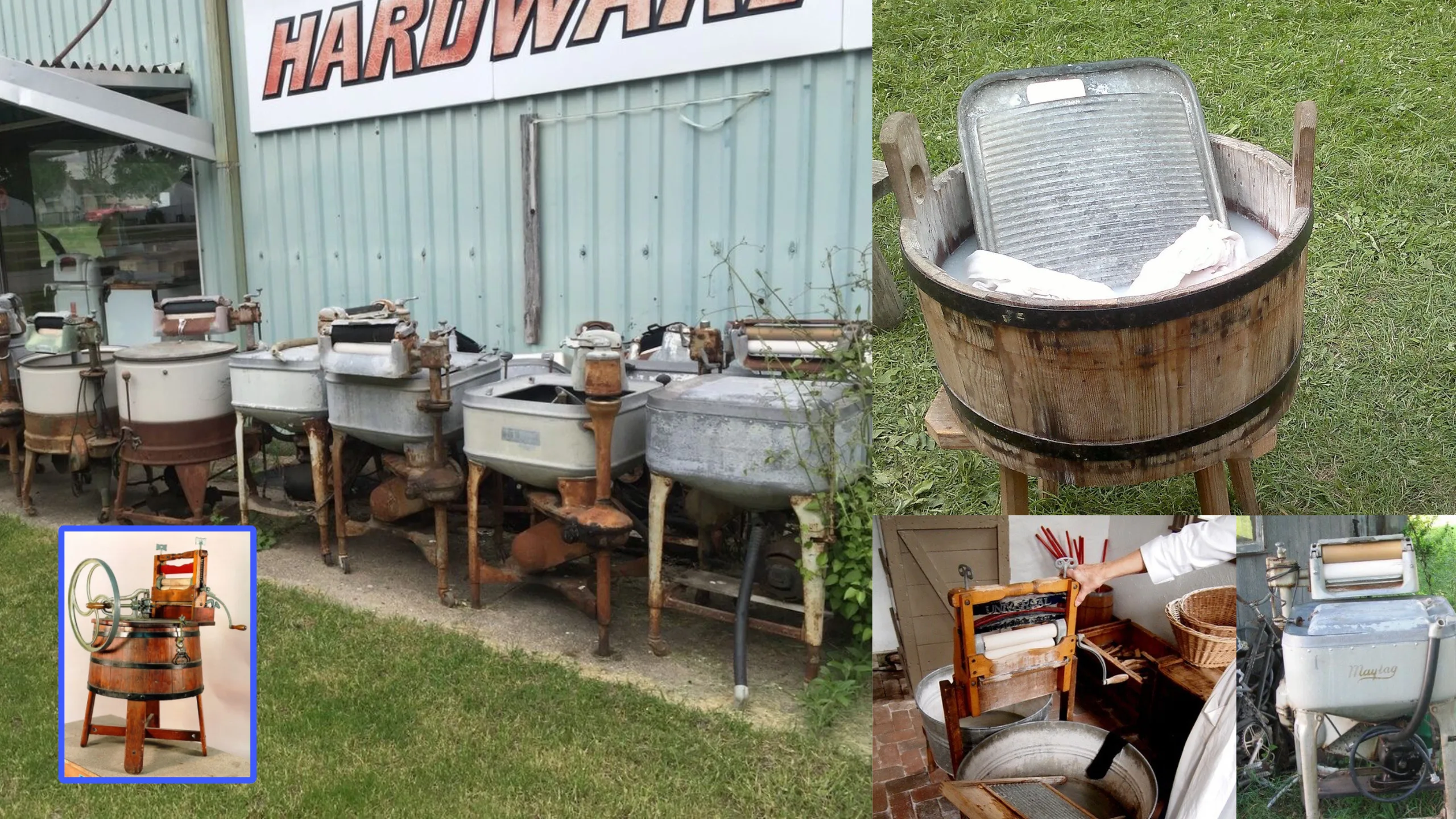The Washing Machine Timeline serves as a historical journey, tracing the evolution of the origins to the sophisticated devices of today.
1. 1797 – The ‘First’ Washing Tool
This early washing device, though not the first or most advanced, represented a significant advancement for its time. Consisting of a tub and board, users would scrub clothes against the ridged board, aided by soap or detergent to remove dirt. While affordable and portable, it required significant labor and lacked rinsing capabilities.

2. 1851 – The Washing ‘Drum’ is Introduced
The introduction of the washing drum marked a pivotal moment in washing machine evolution. This iteration, featuring a movable arm within a drum, mimicked handwashing motions, effectively cleaning clothes. Despite its effectiveness, limited availability and capacity hindered its widespread adoption.

3. 1908 – Electrify Mode ON
Alva J. Fisher’s electric washing machine marked a significant leap forward, eliminating manual labor and introducing mobility with the addition of wheels. However, its high cost and dependency on electricity limited its accessibility.

4. 1936 – Laundry Time (Washeria)
C. A. Tannahill capitalized on advertising to establish the first laundry, or “Washeria,” attracting customers with its modern washing machines and affordable prices. This innovation popularized laundry services and introduced many to washing machines, paving the way for future adoption.

5. 1937 – Washing Machine Goes Personal
The availability of personal washing machines marked a technological milestone, with brands like Bendix introducing household models. Despite their compact design, these machines lacked advanced features and consumed high levels of energy.

6. 1957 – Top-loading & Modes
The introduction of top-loading washing machines with various washing modes and settings signified a significant advancement. While praised for their convenience and versatility, these machines often faced mechanical issues, such as motor burnout.

Present Day
Today’s washing machines boast cutting-edge features, from intelligent washing options to Wi-Fi connectivity. Washing Machine Wise offers a curated selection of modern washing machines, reflecting the ongoing evolution of this essential household appliance.
Happy Washing Guys!
A Brief on how to use 1937 washing machine

Hand laundering, a meticulous chore of yesteryears, encompassed a multifaceted process involving soaking, pounding, cleaning, and rinsing soiled fabrics.
In an era preceding the convenience of indoor plumbing, every drop of water essential for the laundering endeavor, from washing and boiling to rinsing, had to be manually sourced from a pump, well, or spring.

The laborious nature of hand laundering demanded a concerted effort, beginning with the arduous task of carrying water by hand, followed by the meticulous heating of it over a fire to achieve optimal cleansing temperatures, before finally pouring it into a designated tub for the laundering ritual.
This intricate process, laden with physical exertion and meticulous planning, dictated the prudent allocation of limited resources.
The finite quantity of warm, soapy water necessitated a strategic approach, whereby it was judiciously utilized to launder garments in order of ascending soil levels, commencing with the least soiled articles and progressing to more heavily stained ones.

Yet, the laundering journey didn’t conclude with washing alone; an additional step was indispensable to ensure the thorough removal of soap and water residue.
This supplementary phase entailed the utilization of clear water for rinsing, followed by the labor-intensive task of manually rolling up and twisting the saturated garments to expel excess moisture.
The saga of hand laundering, however, extended beyond the realm of washing and rinsing. Post-laundering activities such as drying and ironing, intrinsic to achieving impeccably clean and presentable garments, further prolonged the duration of this painstaking endeavor, often spanning an entire workday.

Thus, hand laundering, with its intricate series of steps, resource management challenges, and time-consuming nature, stood as a testament to the resilience, diligence, and ingenuity of individuals who embraced this household chore as an integral part of their daily lives.
Remember to share this Story with friends and family






